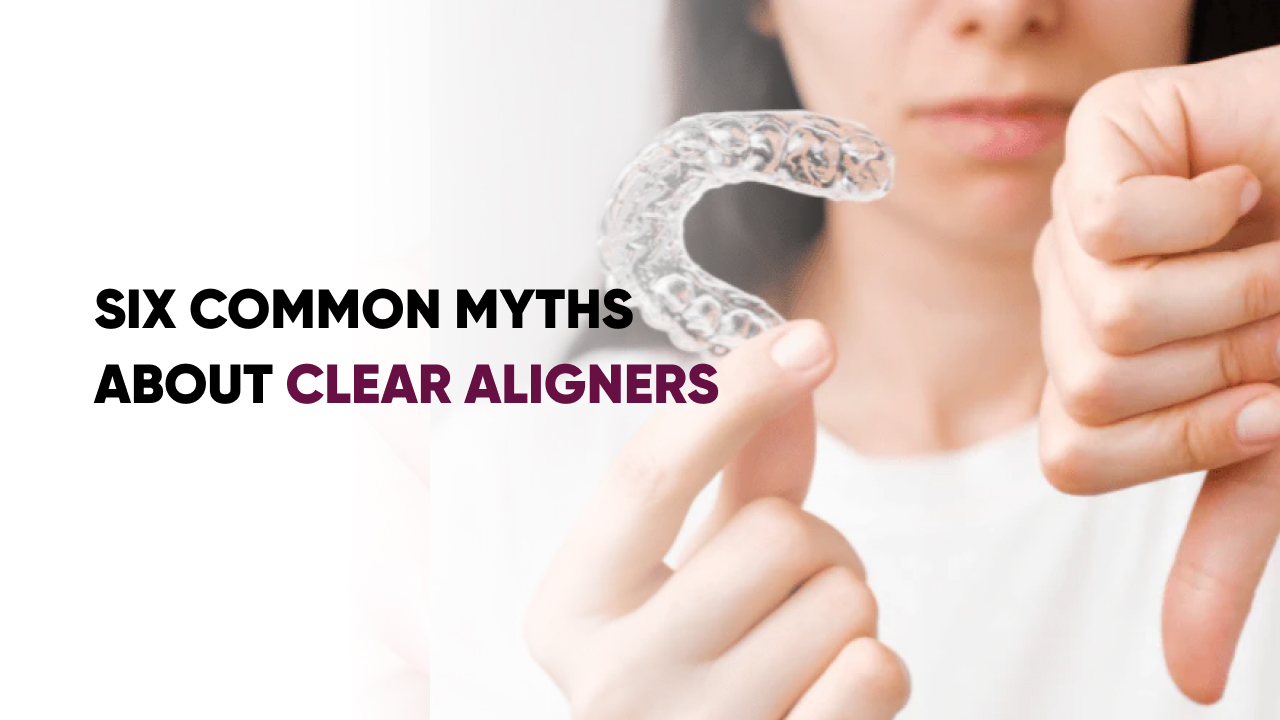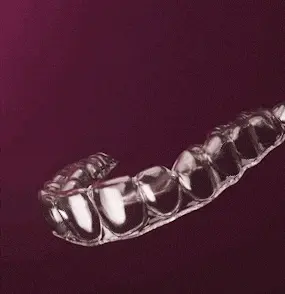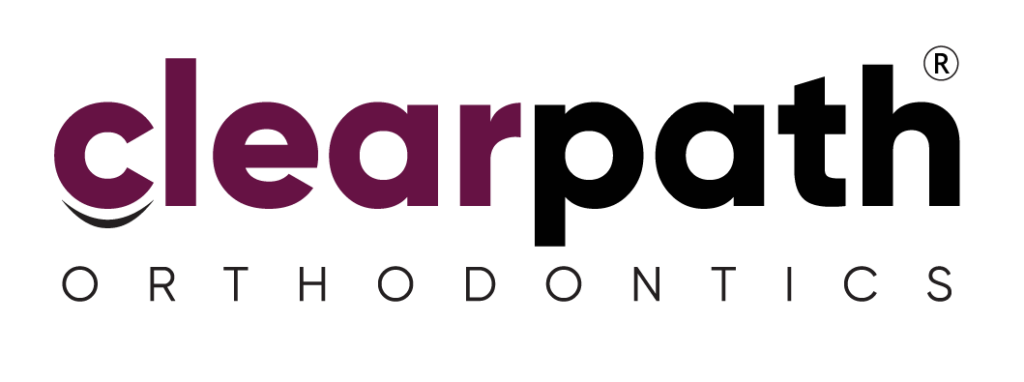
Think You Know Clear Aligners?
Let’s Bust Some Myths!

“Podcast on this blog is Available Now!” →
Six Common Myths About Clear Aligners
Going through aligner therapy isn’t just about perfect looks, it’s a careful process that demands professional guidance every step of the way. Clear aligners have become a popular choice for many people because they’re discreet, comfortable, and offer a more flexible alternative to traditional braces. Though they look simple, aligners are a highly precise tool that is designed for your dental needs.
Clear aligners have been around for a while now, but there’s still underlying confusion surrounding how they work and what they can do. Let’s clear up some of the most common misunderstandings and myths regarding these innovative teeth-straightening tools.
Read More: How Long Do Aligners Take to Work?
Myth 1: Clear Aligners Take Longer Than Traditional Braces
Many people believe clear aligners require more time than traditional braces to achieve desired results. In reality clear aligner treatment takes about the same time duration as conventional braces, and in some cases may even work faster.The advanced 3D planning technology used in clear aligner treatment provides for more accurate predictions and better optimization of tooth movement. For mild to moderate cases, patients complete their treatment within 12 months, comparable to or faster than traditional braces.
Myth 2: Clear Aligner Treatments Are Expensive
While clear aligners may have a higher initial cost than traditional braces in some cases, the total treatment cost is often comparable. Many dental clinics offer flexible installment plans to make treatment more accessible. When considering the cost, it’s important to factor in the convenience, comfort, and aesthetic benefits that clear aligners provide. Some patients require fewer clinic visits, leading to quicker results and cost savings.
Myth 3: Clear Aligners Are Less Effective Than Fixed Braces
This is perhaps one of the most persistent myths about clear aligners. Clear aligner therapy can effectively treat a wide range of orthodontic issues, including crowding, spacing, overbites, underbites, and crossbites. Advanced materials and latest digital features enable complex tooth movements that were once thought possible only with traditional braces. While severe orthodontic cases might still benefit from conventional braces; Clear aligners are highly effective for mild to moderate cases, with success rates similar to traditional orthodontic treatment.
Myth 4: Clear Aligners Are Hard to Maintain
Keeping your clear aligners in good shape is simpler and easier than dealing with traditional braces. Think about it: with regular braces, you’re constantly working around brackets and wires to clean your teeth, and food gets stuck in all sorts of places. With clear aligners, you just pop them out when you need to eat or clean them. No special tools required! Regular maintenance involves:
- Rinsing aligners with lukewarm water (never hot water, which can warp the plastic)
- Gentle brushing with a soft toothbrush and mild soap or designated aligner cleaner
- Proper storage in their case when not in use
- Regular dental hygiene, including brushing and flossing after meals before reinserting aligners
Don’t forget to brush and floss your teeth before putting your aligners back in after meals. This helps keep both your teeth and aligners clean and fresh. Trust me, it becomes part of your routine pretty quickly.
Myth 5: Clear Aligners Hurt a Lot
While some discomfort is normal during any orthodontic treatment, clear aligners generally cause less pain than traditional braces. The discomfort is usually mild and temporary, occurring primarily when switching to a new set of aligners. Unlike traditional braces, there are no brackets or wires that can cause irritation to the cheeks and lips. The smooth plastic material of clear aligners is generally more comfortable, and the pressure applied to move teeth is gradual and controlled. Most patients report that any initial discomfort subsides within a few days of wearing new aligners.
Myth 6: Clear Aligners Are Not Suitable for Teenagers
This myth likely stems from early days when clear aligners were primarily marketed to adults. Today’s clear aligner systems are ideal for teenagers, with special features designed to accommodate young fellows. Many systems include compliance indicators to help parents monitor wear time and eruption compensation that allows for the emergence of new teeth. Studies have shown that teenagers are often more compliant with clear aligners than traditional braces.This is likely due to the aesthetic advantages and ability to remove them for sports, playing musical instruments, and special occasions.
Conclusion
The truth is, there are many myths about clear aligners that can lead to confusion. Some people may think they’re not effective for certain cases, or that they’re too uncomfortable to wear consistently. However, when used correctly, clear aligners can be a great choice for many people looking to improve their smile. Like any dental treatment, success comes down to following your dentist’s guidance and staying committed to wearing your aligners as prescribed. Skipping days or cutting corners might seem tempting, but it can slow down your progress and potentially lead to setbacks in your treatment journey. And now that you know the facts behind these common myths, you can make an informed decision about your dental care.

